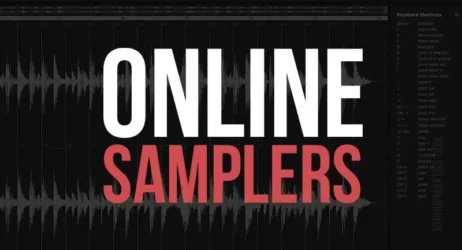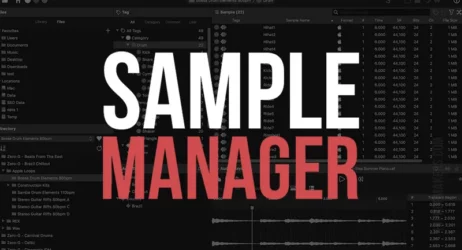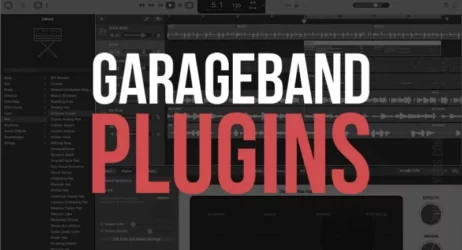This guide will answer what are Triads in music, explain the different types of triads, how they are used, and how to use them in music production.
- What Are Triads in Music
- What Is An Example of A Triad
- What Are The 4 Types Of Triads
- Are Triads The Same As Chords
- What Are The 3 Parts Of A Triad
- What Are Triads Used For
- How Do You Identify Triads In Music
- How Do I Learn Triads
What Are Triads in Music?
Triads are one of the most common types of chords used in music. A triad is made of a combination of three notes that can be stacked vertically in thirds. A root is the lowest note in a triad. While the middle note is called a third. And the last highest note is called the fifth.
To understand a triad, you can think of it as a tree, and the root of three is like the root of a triad.
The root plays an important role in carrying the voicing of a chord, and the chords carry the letter name of any root note.

The second note in a triad is termed the third, and it is called a third because it is exactly the third interval away from the root of a chord.
A third of a chord is also important in forming triad chords because the quality of the third determines whether the chord is a major chord or a minor chord.
A chord is termed a minor triad if there’s a minor third interval between the root note and the third. At the same time, a chord is called a major third if there’s a third major interval between the root note or the third.
In a triad, the third and last note is nothing but what we called as the fifth. Since it is a fifth interval from the root note, we call it the fifth.
As we put all the root notes, the third and the fifth, we get our triad ready. It is important to remember that triads are made up of intervals, they are affected by quality.
The first, third, and fifth intervals are the number of notes that make up the triad. But the voicing of the triad is changed by the interval quality of each note.
What Is An Example of A Triad?
For example, let’s say you want to build a C major triad. First, you’ll have to consider the root note, which will be the C, then (imagine a piano keyboard) 4 half steps so you will land on the E note. After that, again count 3 half steps, and you’ll land on the G note.
So in this way, you get the C-E-G as the C Major.
The second way to form a major triad is to take the first, major third, and fifth notes from a major scale.
Let’s say you want to build F major chord. Then you first consider the key signature for an F major. Then you would write the triad on the staff, considering the F as your root position, which would make the F Major Chord.
What Are The 4 Types Of Triads?
Here are the 4 types of triads in music:
#1. Major Triads
A major triad is made up of the following three notes:
- Root Note
- A Major Third above the Root Note
- A Perfect Fifth above the Root Note
There are two ways to build a major triad. Let’s first discuss the Half-step counting process. Using this process, you have to count half steps using notes to build a major triad and also consider the following formula:
Root Position note + 4 Half steps + 3 Half steps
#2. Minor Triads
A minor triad includes the following:
- A root
- A minor third above the root
- A perfect fifth above the root
Considering the half-step counting process, the formula would be like this:
Root position + 3 half steps + 4 half steps
And considering the second way, you have to take the first, the minor or flat third, and fifth intervals from a major scale.
#3. Augmented Triads
An augmented triad is like having a stack of major intervals and four intervals between each interval. For example, if you want to form a C-augmented triad, then consider this formula:
Root Position + 4 half steps + 4 half steps
So the C augmented will be formed like this C-E-G#
#4. Diminished Triads
A diminished triad is just like having a stack of minor intervals with three half steps between each interval. The formula would be like this:
Root Position + 3 half steps + 3 half steps
Are Triads The Same As Chords?
A triad is a type of chord. Remember the difference between triads and chords, and it can be thought of like this: All triads are chords, but not all chords are necessarily triads.
A triad is a 3 note chord that is built on the thirds. At the same time, a chord means when two or more notes are played together simultaneously.
What Are The 3 Parts Of A Triad?
A triad is made of 3 notes as follows:
- A root note
- A third
- A fifth
Note that a triad can be stacked, so its notes are all on the spaces or all on the lines.
What Are Triads Used For?
Triads are the basis of tonal harmony in music, and they are a type of chord. Whether it is a sheet musician or those who play by ear, all use triads, used in all musical backgrounds.
How Do You Identify Triads In Music?
A triad is nothing but a chord made up of a collection of three notes that are arranged as thirds.
To determine whether a three-note chord is a triad or not, just arrange the three notes on the circle of thirds. Remember that the pitch class of a third will always sit next to each other.
How Do I Learn Triads?
- Understanding Triads: First, it’s important to understand what a triad is. Simply put, a triad is a three-note chord that is built by stacking notes on top of each other. Each triad consists of a root, a third, and a fifth note. The root is the note that the triad is named after. The third and the fifth are determined based on their distance from the root. For example, in a C major triad, C is the root, E is the third, and G is the fifth.
- Learning Major and Minor Triads: Start with learning the major and minor triads because they’re the most common ones in music. For a major triad, think of a ‘happy’ sounding chord. For a minor triad, it might sound ‘sad’ or ‘serious.’ A good way to practice these is to play them on a musical instrument like a piano or guitar.
- Discover Diminished Triads: After you’re comfortable with major and minor triads, you can explore diminished triads. They have a ‘tense’ sound, which comes from the smaller distance between the root and the third and the third and the fifth.
- Using Flashcards: Flashcards can be super helpful in memorizing the different triads. Write the name of the triad on one side and the notes that make up the triad on the other side.
- Listen and Identify: Practice listening to different kinds of music and try to identify the triads being used. Testing your knowledge and understanding of the use of triads in real songs can be a fun experience.
- Practicing Regularly: Like anything else, practice makes perfect. It’s recommended to dedicate a daily practice session for triads on your instrument and ear training.
- Ask For Help: If you’re having trouble, don’t be afraid to ask a music teacher or look up tutorials online. Numerous resources are available to assist you!
Summary of Triads in Music
Triads are one of the most commonly used chord types. A triad is composed of three notes stacked vertically in thirds. To describe the notes of a triad, the lowest note is called the root, while the middle note is called the third. And the last highest note is called the fifth.
It is clear that triads play a huge role in the world of music, from the tunes of popular music to the sophisticated compositions in Western art music.
The diatonic triads, which consist of three-note chords built from different scale degrees, are the building blocks for many melodies and harmonies.
Looking at our first triad, the C major, it’s composed of a major third and a perfect fifth above the bass note, showing a fundamental example of how a triad consists.
But there are different triads, with varied triad qualities that each contribute their own flavor to a piece.
For instance, diminished triads, where the third and fifth are smaller than in a major triad, bring a sense of tension, while the C minor triad, an example of minor scales’ product, imparts a mood that’s often described as melancholic or serious.
As we add more pitch classes, we reach the seventh and ninth chords, like the seventh chord, which extends the triad’s concept. However, it’s essential to remember that each chord’s quality, like a major and minor or a diminished triad, is indicated by a capital letter denoting the root note and a quality symbol.
The diminished fifth in a diminished triad is one such symbol. But there’s more than just major, minor, and diminished. The added minor triad, for example, introduces another note, adding complexity to the harmonic function of the chord.
As listeners and creators of music, we can hear and use these triads built on every scale degree to enrich the melodies and harmonies that we produce.
Whether in C major or any other key, understanding triads’ role in Western music helps us appreciate the intricacies that make our favorite tunes so memorable.
By learning about triads, we’re tapping into a deep well of knowledge that’s been refined over centuries. So keep exploring, and remember, every great composition started with a single triad!
I hope you found this info helpful and we answered what are Triads in music.




